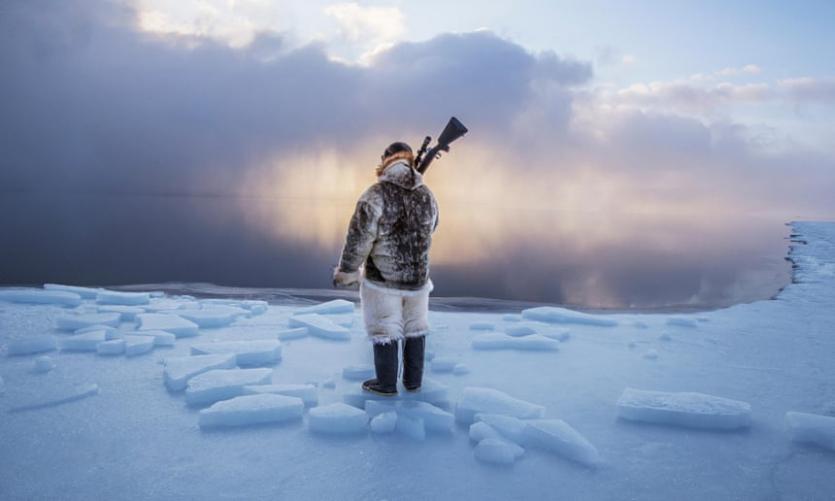The Inuit of Labrador already have higher concentrations of methylmercury in their bodies than non-indigenous Canadians, but there is sharp disagreement over the extent to which large dams are further elevating those levels, with each side citing conflicting research. Photo:National Geographic/Alamy
Canadian traditional hunting grounds on Inuit public lands in danger from dam construction
By Patryk Krych | The World Daily | JUNE 22nd 2020
According to Canada’s indigenous leaders, the United States’ recent push for clean and renewable energy is causing long-term damage to their traditional hunting grounds, in the Inuit public lands, potentially threatening their ways of life.
Karl Michelin, an Inuit hunter living only a few miles off from frozen tundra in a subarctic fjard estuary, has said that he and many others owe their lives to the hunting grounds. The main source of food for him, his wife, and his toddler are the thousands of barking ringed seals that he hunts year-round in the area’s local waters, for their heavily fatted meat – necessary for survival in such harsh and cold conditions.
Among the region’s Inuit, both town jobs and total food security are scarce. Most of Michelin’s neighbours aren’t any different, with their reliance on hunting the seals for their survival, both for eating, and selling them, for some. The town’s isolated position in the tundra gives a harsh scarcity to any chances of regular employment opportunities, and food imports are as a result excessively expensive.
Michelin went on to say that this way of life of theirs is under threat, surprisingly so from a cause that’s considered greatly positive – the United States’ recent push for more incorporation of clean and renewable energy. “In order for you to get that kind of power,” he said, “we have to sacrifice our way of life in a lot of ways.”
The town, called Rigolet, is a highly remote coastal community in Canada’s Labrador, hosting a population of just over 300 people. It rests downstream of Muskrat Falls, where Nalcor, a state-owned company, had built a $12.7bn dam on the Churchill River only last year as a key drainage point. Already, however, Nalcor are planning to build a new dam that would produce three times as much power – the majority of which would be exported over to the US.
The existence of these dams is going to disrupt the hydrologic cycle that’s key to underpinning the area’s ecosystem, and will in turn increase wide exposure to a toxin that’s associated largely with dam reservoirs. This is according to the Nunatsiavut government, which govern over the entirety of the area. Mercury is unearthed from the soil and vegetation when the land is flooded, and as such ends up released into the water column where it then interacts with bacteria to become a neurotoxin called methylmercury.
“The methylmercury is going to come down the river and into our food chain and the fish and the seals won’t be fit to eat,” said conservation officer David Wolfrey, in charge of observing that all of Rigolet’s residents follow the limits on fishing and hunting. “My grandchildren, they’re not going to be able to live the life that I lived, and my grandparents lived.”
“When they poison the water, they poison us,” Wolfrey added.
Such issues are common among the Inuit people and the Nunatsiavut government, as a 2016 survey of 22 hydropower projects that’d been planned for future development over in Canada had revealed that all 22 projects were all within 60 miles of at least one indigenous community – a dangerously close distance.
60% of Canada’s domestic needs are already powered by large dams, with at least 900 of them in the country on a large scale. According to WaterPower Canada, the country only lags behind China in terms of the world’s hydropower superpowers.
Many supporters of the increase in hydroelectric power production across the world say that it’s necessary for the sake of curbing global warming emissions, and that it serves to preserve the environments. Others, such as the experts over at the US Environmental Protection Agency have stated that they do not consider it entirely “green”, with many criticisms pointed at the costs of energy for the sake of construction, as well as the impact from the rotted vegetation from the flooded areas that release both methane and carbon.
“The question is, should we put our time and energy into that, or into developing renewable energy projects in Maine and New England where we get more economic benefits from it?” said clean energy director for the Natural Resources Council of Maine, Dylan Voorhees.
By Patryk Krych | © The World Daily 2020






